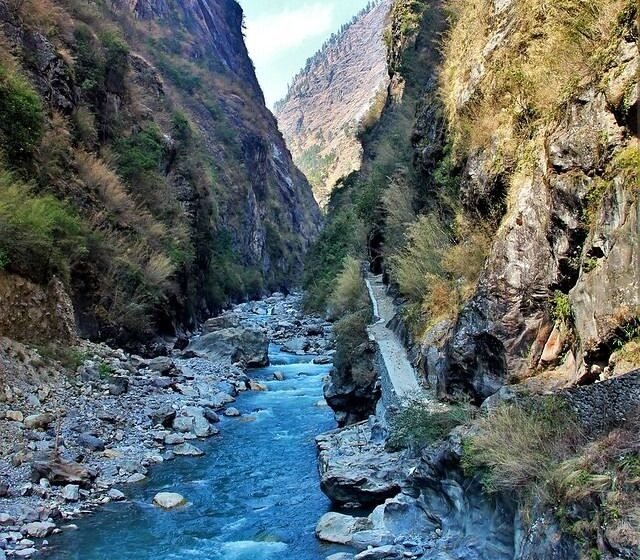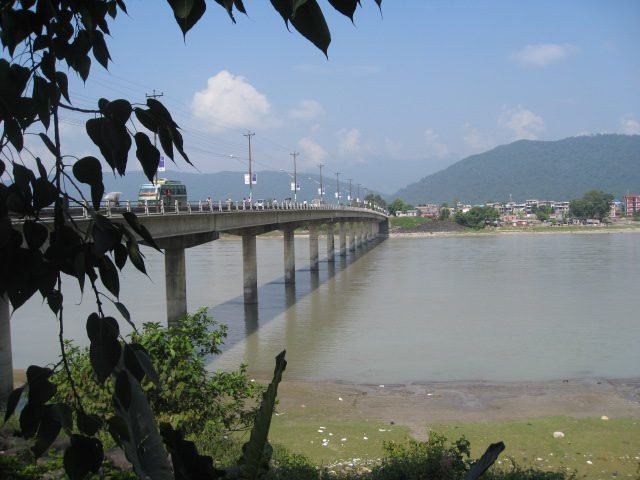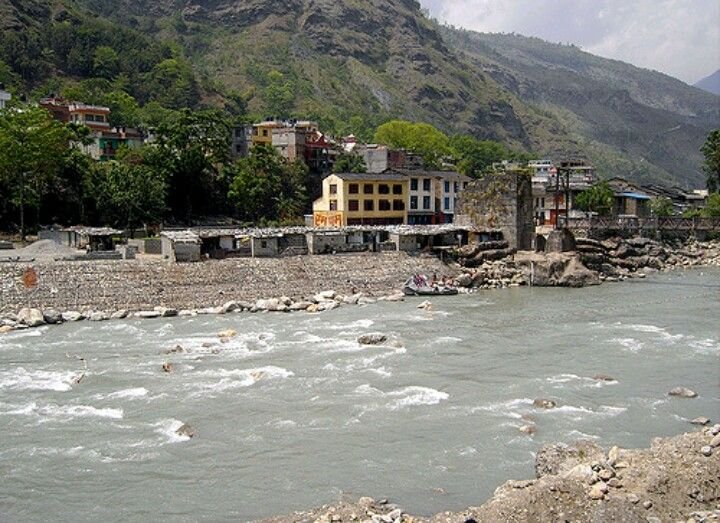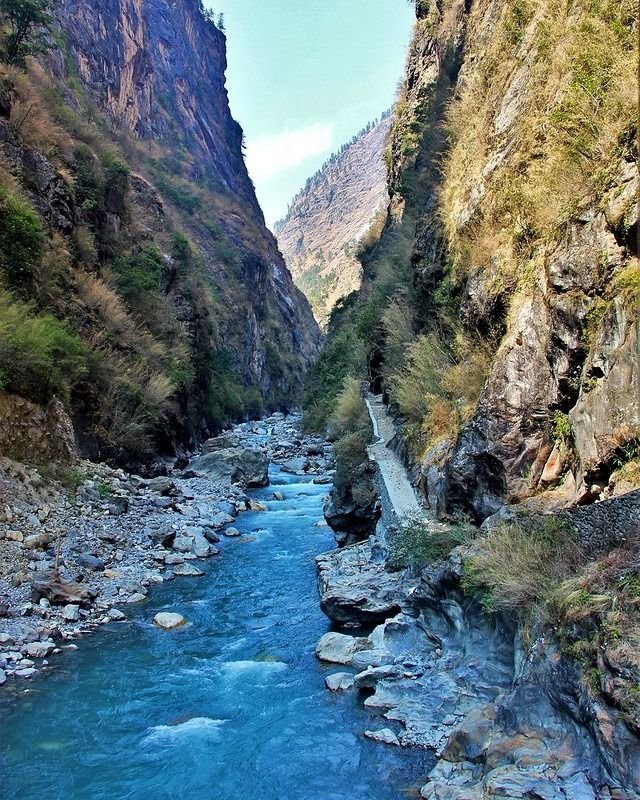Gandak River: The River of Nepal and Bihar

The Gandak River is an important source that has great significance for being culturally, historically, and ecologically rich. The river flows from Nepal as well as India through the states of Bihar and Uttar Pradesh. Being one of the principal tributaries of the Ganges, Gandak had shaped agricultural practices, routes for trade, and traditions in the area for quite some time. It is locally referred to as the Narayani River in Nepal. Here, it had crucial historical associations with Buddhism and ancient trade activities in conjunction with community rituals. Just like most rivers around there, Gandak still grapples with major environmental issues, like floods, pollution, and siltation. The river supports farming, especially in Bihar. It irrigates the fertile crops but goes a great length of destroying them whenever floods set in during seasons.

Origin of the Gandak River
The Gandak River arises in the Nepal Himalayas; the upper course of the river is known as the Narayani River. This is an amalgamation of several Himalayan streams, including the Trishuli and Bheri Rivers near Gosainkunda Lake. The river then turns south and follows Nepal’s Chitwan Valley into India, at Valmiki Nagar, Bihar; here, the stream takes the name Gandak.
From here it travels an overall distance of 630 km, draining parts of Bihar and Uttar Pradesh before merging with the Ganges River near Hajipur. The catchment area of the river extends to 46,300 square kilometres, featuring diverse landscapes- mountainous areas and valleys in Nepal to the alluvial plains of Bihar. For all its length, Gandak has played the very important role of a life-giving water body to various villages and towns along its banks by providing water for irrigation purposes, for drinking, and for various other household needs. As crucial, the river has the Gandak Barrage at Valmiki Nagar built to control water flow and enable irrigation in both Bihar and Uttar Pradesh. Indeed, it is vital for flood mitigation and sustaining agriculture; however, there remain difficulties in further balancing the distribution of water from Nepal to India.

Mythology and Religious Significance
The Gandak River is of special significance not only in Hindu mythology but also in Buddhist traditions. The local folklore attaches special importance to the river due to the related story of Rishi Gautama and his wife Ahalya. According to one version of this legend, it is said that Ahalya had been cursed by her husband but was rescued by Lord Rama on the banks of the river. The river is said to be sacred. Therefore, the Gandak River is a sacred river for pilgrims. So, they visit there and perform rituals in Valmiki Ashram and other temples. It also has holy water from the Himalayas, where it bathes when necessary to have the sin cleansed.
The pilgrims gather on the riverbanks for festivals like Chhath Puja, where the sun god is worshipped at dawn and dusk. In Nepal, Gandak, known as Narayani, is an important tributary draining the Himalayas, with devotees worshipping the river at temples and ghats along its course. Further, Gandak has also a very close relationship with Buddhism. Ancient trade routes alongside the river joined the Buddhist sites of Lumbini, the birthplace of Buddha and Vaishali. These routes used by the Buddhist monks and travellers while travelling to spread the words of Buddha have made this river a route for spiritual and cultural interaction.

Historical Significance of the Gandak in Trade and Agriculture
The Gandak River was one of the major trading and commercial routes between Nepal and India during history. Ancient traders used the river for goods such as spices, textiles, and grains, carrying trade from the Indo-Gangetic Plain to the Himalayan regions. Because of its proximity to Buddhist centres like Vaishali and Lumbini, it became a passageway for cultural and spiritual exchange. Gandak’s position was of vital importance to the Mauryan Empire and other region-wise kingdoms in establishing their trade routes, and thereby, spreading their dominion forward. Ancient writings describe this area around the Gandak as rich, based upon agricultural productivity enabled by its water. Today, the water plays a significant role for agricultural purposes in Bihar state. Major crops like paddy, wheat, sugarcane, and maize are grown with the support of irrigation systems attached to Gandak. It is one of the biggest canal networks in India that helps agricultural output and food security in the area. While being crucial to agriculture, it is destructive during the monsoon season when it floods the area by overflowing the banks and displacing the population.

Floods and Their Impact on Bihar
The Gandak River is a blessing and a curse for the people of Bihar. It gives them a much-needed irrigation water supply. However, it has become so notorious for an annual flood that it ranks top in North India for being the most prone to flooding. Each year whenever monsoon rains gather momentum, swelling of flow causes rivers to overflow, inundating farmlands and habitations due to inadequate handling of floods.
This leaves lives lost, crop losses, and evictions of hundreds of houses. Gopalganj, Siwan, and East Champaran are quite vulnerable to floods caused by Gandak. The shifts in the course of this river, high siltation, and low strength of embankments lead to a complicated situation, escalating the problems for the community members. Sometimes, because the household members need to be on the move to be able to find work opportunities, it further adds to the pressure on the state account.
This has resulted in the Gandak Barrage and embankments, though they still witness a flood phenomenon every time. Floodwater regularly overflows from the embankments and creates waterlogging and polluted water supply. The state government is trying to develop more effective flood control with central agencies, but due to unpredictable monsoons, this cannot be done totally to avoid risk.

Conservation Challenges and Solutions
Issues of pollution and degradation of ecosystems are majorly faced by the Gandak River. Untreated sewage and industrial waste from an increasing population along the banks contaminated water in many areas. Deforestation has resulted in increased siltation within the Gandak basin, mainly within Nepal, and has reduced its carrying capacity and caused floods. Unrestrained sand mining raises the most important problems, which include too much extraction from the riverbed that leads to ecological disruption. Altered water conditions and pollution are making fish and other aquatic species lose their habitats. The river’s transboundary nature makes the task of conservation difficult for Nepal and India.
Some conservation strategies have been introduced as a result of these incidents. These include:
- Afforestation Projects: Both Nepal and India focus on reforesting the vicinity of the river’s catchment in the fight against soil erosion and biodiversity enhancement.
- Pollution Control Measures: Pollution control measures aim at lowering industrial waste discharge and facilitating the construction of sewage treatment plants along the river.
- Community Involvement: Communities are taking part in awareness campaigns that promote sustainable habits and cut reliance on sand extraction.
- Flood Management Programs: The approach of the authorities involves strengthening levees and installing early warning systems for floods.

Conclusion
The river Gandak is seen with natural bounty, historical significance, and cultural heritage for the land it crosses. The role it plays in agriculture and trade as well as in connecting Buddhism and Hinduism to the local communities further emphasizes the lasting legacy of this river along its banks. However, the river also poses numerous challenges; flooding during certain times of the year, such as monsoon, could be thought of plainly as immense tasking, even when it engendered immense damage in the ecological and environmental sense as well. Without these, the restoration and conservation of Gandak should be strongly seen if its ecological and economic worth is to be secured. A discussion stressing sustainable water use management, water pollution control, local people engagement, and alternative water management strategies must now take place to achieve some future safety for this river. Working together, the solution for maintaining Gandak will also provide land and livelihood support for generations to come. Truly, Gandak is not only a waterway; it is a passage between the past and present, not devoid of promises and support. It is incumbent upon it to strike a balance between development and conservation for its sustenance and worth in growth and culture.


